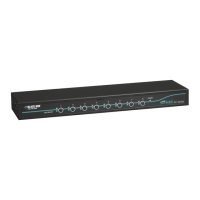
Do you have a question about the Black Box SERVSWITCH Series and is the answer not in the manual?
| Max Resolution | 1920x1200 |
|---|---|
| Audio Support | Yes |
| Manufacturer | Black Box |
| Type | KVM Extender |
| Video Interface | VGA |
| Power Supply | External |
| Connection | Cat5e/Cat6 |
| Series | SERVSWITCH Series |
Statements regarding radio-frequency energy emission and compliance with regulatory limits for Class A computing devices.
Lists other agency approvals and certifications for the product, such as UL, CSA, and IEC standards.
Details the technical specifications of the ServSelect IP, including agency approvals, port details, and environmental requirements.
Highlights the key features and advantages of the ServSelect IP switches, focusing on flexible, centralized control of data center servers.
Provides essential safety instructions for using the ServSelect IP products to avoid potential problems and hazards.
Guides the user through initial setup, including checking shipped items and necessary accessories for proper installation.
Lists all the components included in the ServSelect IP package.
Details the necessary adjustments to mouse settings on target machines for remote user control with the ServSelect IP.
Explains how to use the OSD Main dialog box to view, configure, and control servers within the ServSelect IP system.
Provides a comprehensive guide to OSD navigation basics using keyboard and mouse inputs.
Details keystrokes and their functions for navigating the On-Screen Display (OSD) interface.
Describes how to access the Names dialog box to identify servers or serial devices by name rather than port number.
Explains how to access the Security dialog box to set up screen saver modes and password protection for the analog port console.
Details how to validate system integrity by running diagnostics on main board subsystems and SAM adaptors.
Provides a description of each diagnostic test performed on the system, including memory, firmware, and connectivity checks.
Explains how to issue a reset command to re-establish communication and restore functionality for PS/2 keyboards and mice.
Describes how to scan servers in scan mode, displaying the list by server name or EID number.
Guides on how to add servers to the scan list using the Scan dialog box.
Explains how analog users can simultaneously control multiple servers by broadcasting keystrokes and mouse movements.
Details the process of selecting servers and activating broadcast commands for keystrokes and mouse movements.
Describes the seven main selections available in the ServSelect IP Terminal menu for configuration.
Explains how to configure the ServSelect IP for network access and positioning within a network.
Details how to activate and change the password for secure access to the ServSelect IP terminal menu.
Provides guidance on troubleshooting issues with the ServSelect IP, including how to contact technical support.
Instructions on how to contact BLACK BOX technical support for assistance with malfunctioning units.
Guides on upgrading the ServSelect IP unit with the latest firmware using a TFTP server.
Step-by-step instructions for uploading a new FLASH firmware file to the ServSelect IP.
Instructions for upgrading firmware on multiple SAMs at the same time.
Explains the functionality of the serial SAM, including its modes and configuration options.
Details how to configure serial SAM parameters such as baud rate, parity, and flow control.
Describes how to define key combinations for accessing configuration screens and specific functions.
Guides on creating macros for the serial SAM, including defining key sequences and macro actions.
Provides a table listing the pinouts for the serial SAM for reference.
Details the pin configuration of the serial SAM, including DB9-F host signal and SRL signal.
Explains how to emulate Sun keyboard keys using PS/2 keyboard key press sequences.
Provides a table mapping Sun keyboard keys to PS/2 key sequences for emulation.
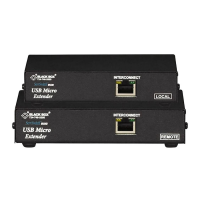
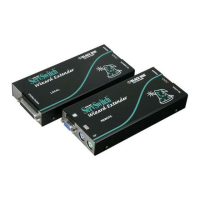
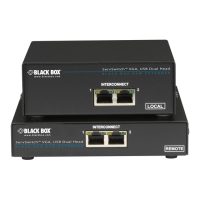
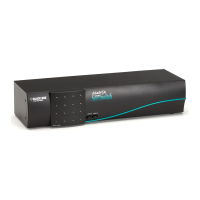
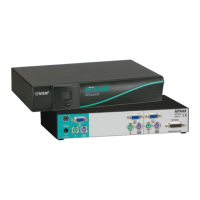
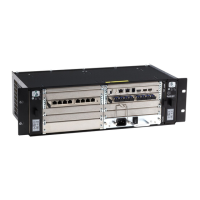
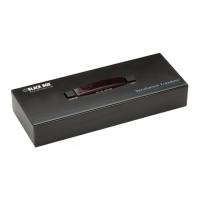
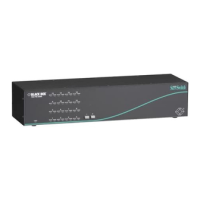


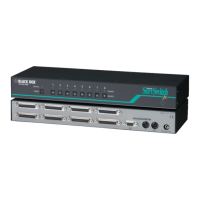
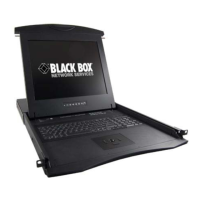
